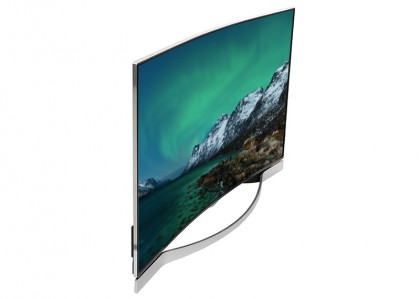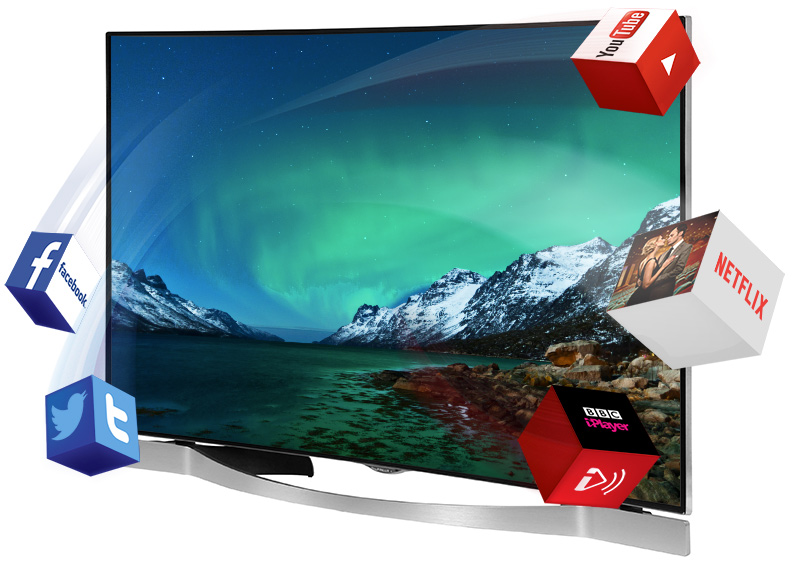Why you can trust TechRadar
Picture quality is best described as a mixed bag.
The set looks distinctly unhappy with standard def Freeview channels. Images are blotchy and ill-defined. This is not so much a dig at Finlux, more that it's increasingly a problem for viewers of next gen large-screen panels.
As the trend toward bigger TVs continues, the tolerance we have for SD falls as its flaws become more readily apparent. It's something that commercial broadcasters should be concerned about.
Thankfully if you want to cherry-pick your viewing you can filter out the SD uglies using the Finlux's Favourites list. That way you'll only get the hi-def channels.
While SD looks hideous, HD is much more acceptable. The set delivers crisp 1080p nibbles on a smooth 2160p platter. Picture modes include Dynamic, Cinema, Game, Sports and Natural. The latter is probably the best option for most content.
Colour vibrancy is high. The set handles neon green and electric blue with all the ease of a Soho sign fitter. There's real pizzazz to its pictures. When Pyro engulfs the attacking Sentinel in flame at the start of X-Men Days Of Future Past (Blu-ray), the fiery conflagration is spectacular. The metallic sheen of Colossus also looks believably chromed.

Just like that metal X-Man's noggin though, the curved screen does throw some strange reflections.
Every so often you'll see yourself reflected, with the kind of distortion more commonly associated with a fairground hall of mirrors.
The curve itself warrants further debate. The technology's most vociferous supporters, Korean brands Samsung and LG, have tried hard to convince us that a little curve somehow offers a more naturalistic and immersive viewing experience.
This is, of course, bunkum.
Arguably, a curved screen becomes less objectionable on super-sized screens – 77-inch and above. However here, on what seems a rather diddy 55-incher, it has very few obvious benefits.
Sit square on and you'll probably not really notice the warp, move to the side and it becomes a good deal more obvious. Off angle viewing is actually pretty good though, with no huge loss of contrast or colour if you park up left or right.

Ultimately, going curved is a fashion statement. Whether you want a TV with a bend in it should be down to just how cool you think it looks, not because you think it'll somehow enhance Game of Thrones.
While colour luminosity is good, the set struggles with deep blacks. The display itself can't pass Below Black, as evidenced by a simple Pluge test pattern. The HDMI True Black mode should be kept Off, as it really washes out the image.
The movie 300: Rise Of An Empire (Blu-ray) suffers somewhat from this lack of contrast. When war boats collide, there's scant shadow detail to be found in the timbers of the ramming vessels – however the spray and clouds of bubbles are finely delineated.
The picture rings slightly around fine detail on HD content. Normally you can tone this effect down, but even when the Sharpness is taken to zero, there's still some evidence of edge enhancement.
With everyday content viewed from a typical viewing distance this isn't noticeable. Indeed, it's a common processing trick to give images greater definition, however it's not something you'd think you'd need on a UHD TV.
Things improve considerably with native 4K content though.
To access the TV's UHD chops I hooked up a Sony FMP-X5 media player. This HEVC STB has 4K Netflix on board. Suddenly Daredevil is a mass of delicious fine detail. From skin tones to fabrics, the world of superhero attorney Matt Murdoch is done great justice here.
Similarly, the impressive costume design that characterises period epic Marco Polo looks quite beautiful.
Overall I'd rate this a classy 4K performance. You can feel confident that when you hook up a 4K Blu-ray player, image quality will blow your socks off.
There are caveats though. At times you do see some uneven edge-lighting effects behind the panel, probably emphasised by tricks that the light guide is playing to illuminate the curved panel.
Motion resolution is reasonably good. Movie Sense transpires to be Finlux's image interpolation mode. When set on High, motion resolution is maximised. Images retain detail, although as a consequence films have that video-esque quality. While there are some motion artefacts around some moving objects, they are not intrusive.
With Movie Sense set Low, motion artefacts are minimal and panning remains smooth. This is a good everyday mode. On the Medium setting artefacts around certain moving objects become a little more noticeable, but are still not overly intrusive.
If you turn Movie Sense off altogether, moving resolution suffers but horizontal pans judder. Despite this, the set can look occasionally a little smeary.
Sound quality and 3D
Sonically, this curvy Finlux does a solid job. The TV employs a pair of downward firing speakers which counter a lack of finesse with volume. If audio sounds a little on the thin side, there's always that optional subwoofer output on the rear.
The set supports Active Shutter 3D, with two pairs of shuttering specs provided in the box. While there is some double-imaging crosstalk evident in its three dimensional images, this is not particularly intrusive.
The increased brightness of the 3D mode dilutes some of the image intensity, but overall the result is a fun diversion. The kids will get a kick out of it when the Penguins Of Madagascar 3D Blu-ray is on hard rotation.
Steve has been writing about AV and home cinema since the dawn of time, or more accurately, since the glory days of VHS and Betamax. He has strong opinions on the latest TV technology, Hi-Fi and Blu-ray/media players, and likes nothing better than to crank up his ludicrously powerful home theatre system to binge-watch TV shows.

